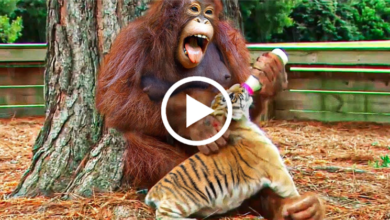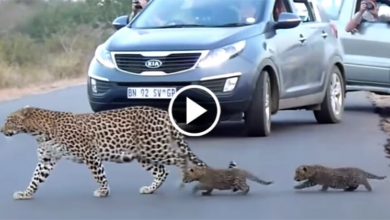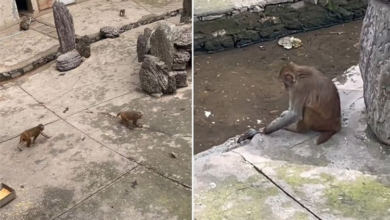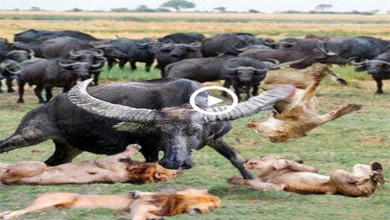Dramatic battle between cobra and lizard in the desert
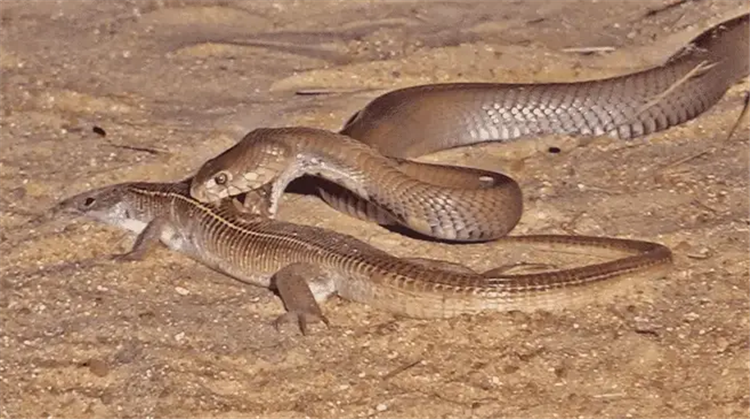
Watch this unique encounter where a skink tries its hardest to get away from a cobra, but is ultimately defeated by the paralyzing effects of the cobra’s venom.
This captivating sighting was captured by Jors Dannhauser, 56-year-old businessman, while on a safari with his wife and two kids in the Northern parts of Sabi Sand on a farm in Buffelshoek.
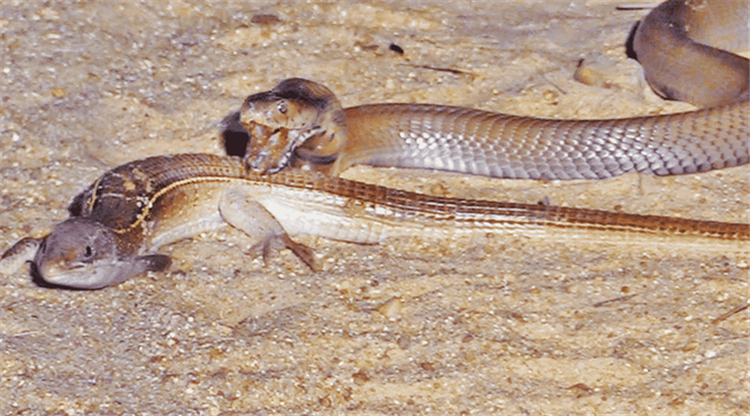
Jors tells Latestsightings.com the story: “We were on our way back to the camp after our evening drive when suddenly we saw something on the road.”
“At first, we saw the snake, which is a Mozambique Spitting Cobra, so we approached very slowly. Then we spotted the skink – we knew we were in for some action.”
“The snake was spending a bit of time looking over its prey, maybe analyzing how it was going to go about the hunt. But, after much thought, it went in for the bite. Within no time it was victorious, the paralyzing venom was too much for the skink’s body and it was unable to get away, although it tried!”
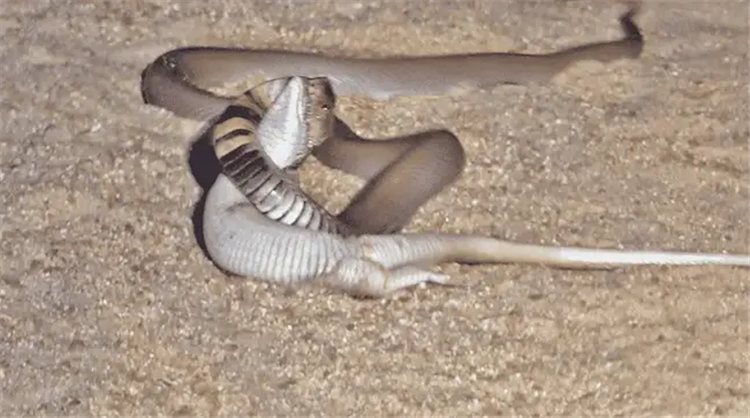
“Once the skink was paralyzed, the snaked started swallowing it whole. And, after a mere few minutes, the cobra had swallowed the whole skink and was happy to disappear back in the tall grass”
“The bush always has something special to offer and after 50 years of being in the bush it still surprises me!”
The shadow lizard immediately rushed to bite the poisonous oriental brown snake when it saw it approaching the young.
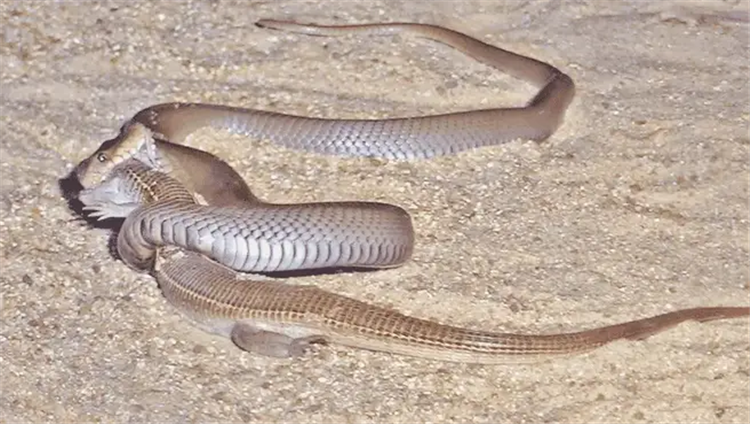
Researchers Greg Watson and Jolanta Watson at the University of Sunshine Coast filmed a mother lizard of the Cunningham ball lizard (Egernia cunninghami) aggressively attacking a venomous oriental brown snake (Pseudonaja textilis) in the mountains. Snowy, southeastern Australia, said the team, which is very unusual behavior for reptiles.Using cameras and thermal imaging techniques, the Watsons watched the mother lizard bite the snake and hold it there for a few seconds. The oriental brown snake was discovered while trying to get close to the baby lizard.
The team also filmed two adult ball lizards attacking and biting another oriental brown snake during a similar encounter, according to the study published September 2 in the Australian Journal of Zoology. In addition, they also witnessed 12 cases of shadow lizards chasing magpies in front of their young.
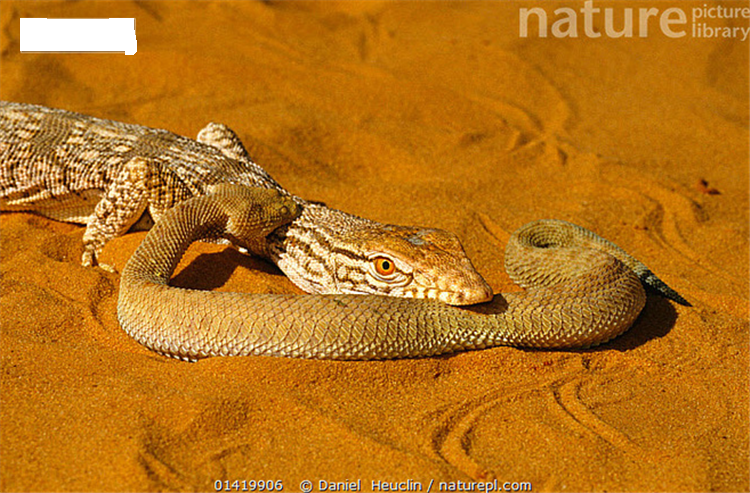
To conduct the study, two scientists observed the ball lizard, an animal native to southeastern Australia, for 32 non-consecutive days over three years. “At first, we planned to document how ball lizards cope with climate change, but gradually turned to studying the close relationship between young ball lizards and their parents,” the Watsons shared. According to them, the latest observation is significant because most lizards rarely show signs of concern for their young or aggressive behavior towards predators. Such behaviors are very rare in the natural environment.
The Cunningham ball lizard is named after explorer Alan Cunningham, who was the first to find a specimen of this species. They live in stable herds with social relations. They have collective strength because living in groups makes it easier to detect threats. In these herds, mother lizards give birth to their young and live with them for several years. The team speculates that the shadow lizards are aggressive towards snakes and magpies, possibly in self-defense or territorial defense. But the above behavior still shows some care for the young.

A desert horned viper (Scientific name is Cerastes cerastes) – a venomous snake species notorious in the deserts of the Sahara has discovered a prey in the hot sand desert and scarce food.
It decided to defeat this target because here, finding prey is not easy and luck is smiling on the venomous snake. Unfortunately, that smile did not last long because the prey fought back fiercely.
Its prey, a green-throated lizard (Scientific name is Tiliqua) fought extremely bravely, it bit into the mouth of the venomous snake so that the opponent could not open it to bite it but inject the venom, The strong bite also causes the snake to “distort its mouth” and retreat.

